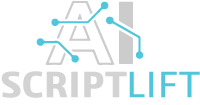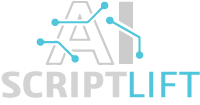
How to Use AI for Competitive Content Analysis
is a pressing question for businesses looking to stay ahead in today’s digital landscape. With the rapid advancements in artificial intelligence, understanding how to leverage these tools for analyzing competitors’ content can significantly enhance your own content strategy. Are you ready to discover how AI can transform your approach to competitive analysis?
AI tools can streamline the process of gathering insights on your competitors’ content, helping you identify trends, gaps, and opportunities. By utilizing platforms like JAXI.AI, businesses can analyze keyword performance, content engagement metrics, and audience preferences, allowing for data-driven decisions that elevate their content strategy. This article will guide you through effective methods to harness AI for competitive content analysis, ensuring you remain at the forefront of your industry.
But this is just the beginning of what AI can do for your content strategy. From uncovering hidden opportunities to optimizing your own content for better engagement, the potential is vast. So, let’s dive deeper into the world of AI-driven competitive content analysis and unlock the secrets to outshining your competition!
Understanding Competitive Content Analysis
Competitive content analysis involves evaluating your competitors’ content strategies to identify strengths and weaknesses. This process is crucial in digital marketing, as it helps businesses understand market trends and audience preferences. By analyzing competitors, companies can refine their own content strategies, ensuring they remain relevant and engaging.
AI significantly enhances traditional content analysis methods. It processes vast amounts of data quickly, uncovering insights that would take humans much longer to find. For instance, AI tools can analyze keyword usage, engagement metrics, and social media performance in real-time. This allows marketers to adapt their strategies promptly and effectively.
Industries such as e-commerce, technology, and healthcare greatly benefit from competitive content analysis. E-commerce businesses can track product reviews and customer feedback, while tech companies can monitor industry innovations. Similarly, healthcare organizations can analyze patient education materials to improve their outreach. By leveraging AI in these sectors, companies can stay ahead of the competition and better serve their audiences. For more insights, explore this article on AI’s impact on digital content strategy. Additionally, check out the benefits of AI for further understanding.
Identifying Your Competitors
To effectively identify your competitors, start by distinguishing between direct and indirect competitors. Direct competitors offer similar products or services, while indirect competitors fulfill the same customer needs in different ways. Begin your search with a simple Google query. Input relevant keywords related to your niche and analyze the top results. This method reveals businesses that rank alongside you.
Next, leverage social media platforms. Analyze discussions and hashtags relevant to your industry. This will help you uncover brands that engage your target audience. Tools like SEMrush or Ahrefs can also provide insights into competitors’ online presence and keyword strategies.
Once you gather this information, create a comprehensive competitor list. Include their website URLs, social media profiles, and key offerings. Regularly update this list to reflect any changes in the market. For deeper insights, explore AI’s role in content strategy. Additionally, consider how AI can enhance SEO efforts. This proactive approach will keep you ahead in your competitive landscape.
Gathering Content Data
To effectively gather content data from competitors, consider various methods. Web scraping allows you to extract large amounts of data from competitor websites. This technique can reveal valuable insights about their content structure and keyword usage. Additionally, using APIs from platforms like social media can provide engagement metrics directly.
Selecting the right metrics is crucial for meaningful analysis. Focus on engagement rates, shares, and backlinks to understand what resonates with audiences. These metrics can highlight successful strategies and areas for improvement.
Several tools can streamline this data-gathering process. For instance, SEMrush offers comprehensive competitor analysis features, including traffic estimates and keyword rankings. Ahrefs is another powerful tool that provides insights into backlinks and content performance. By leveraging these resources, you can gain a competitive edge in your content strategy.
For more insights on how AI can enhance your content analysis, check out our article on the benefits of AI. Additionally, explore how AI is revolutionizing SEO for further strategies.
Analyzing Content Performance
To effectively analyze competitors’ content performance, start by identifying key performance indicators (KPIs). Focus on metrics such as traffic, engagement rates, and conversion rates. These indicators provide insights into how well content resonates with the audience.
Next, utilize AI analytics tools to gather data. Begin by inputting your competitors’ URLs into the tool. This step allows you to extract valuable information about their content performance. Look for metrics like organic traffic estimates and social shares.
After gathering data, compare these metrics against your own content. Identify gaps and opportunities for improvement. For instance, if a competitor’s article has high traffic but low conversion rates, analyze their call-to-action strategies.
Finally, refine your content strategy based on these insights. Use the data to enhance your own content, ensuring it meets or exceeds the performance of competitors. For more on leveraging AI in your content strategy, check out the benefits of AI or explore AI’s future in SEO.
Content Gap Analysis
Content gap analysis plays a crucial role in competitive content analysis. It involves identifying areas where competitors excel, yet your content falls short. This process helps you uncover opportunities to enhance your content strategy. To pinpoint these gaps, leverage AI tools that analyze competitors’ content comprehensively. These tools can assess keyword usage, topic coverage, and audience engagement metrics. By examining this data, you can identify subjects that competitors address effectively but you do not.
Once you identify these gaps, create a structured framework to develop content that fills them. Start by outlining key topics that resonate with your target audience. Next, ensure your content is informative and engaging. Incorporate relevant keywords naturally to boost SEO. Additionally, consider using multimedia elements to enhance user experience. Regularly update your content to maintain relevance and authority. For further insights, explore how AI is transforming content creation here. Also, learn about the benefits of AI in digital content strategy here.
Leveraging AI Tools for Content Insights
In today’s digital landscape, leveraging AI tools for content insights can significantly enhance your strategy. Popular platforms like BuzzSumo and MarketMuse offer powerful features that streamline content analysis. BuzzSumo excels in identifying trending topics and analyzing competitor content performance. It allows users to discover what resonates with audiences, enabling data-driven decisions. MarketMuse, on the other hand, focuses on content optimization. It provides insights into keyword usage and content gaps, ensuring your articles are comprehensive and relevant.
For instance, a leading e-commerce brand utilized BuzzSumo to refine its content strategy. By analyzing competitors, they identified high-performing topics and adjusted their content accordingly. This approach led to a 30% increase in organic traffic within three months. Similarly, a tech startup employed MarketMuse to enhance its blog posts. By optimizing existing content, they improved their search rankings and engagement rates significantly.
These case studies illustrate the transformative power of AI in content strategy. To explore more about how AI can revolutionize your approach, check out our article on the benefits of AI and learn how it can streamline your efforts. Additionally, discover how AI is revolutionizing SEO for better visibility.
Crafting a Competitive Content Strategy
To craft an effective content strategy, leverage insights from your competitive content analysis. Begin by identifying the strengths and weaknesses of your competitors. This will help you pinpoint gaps in their content that you can exploit. Align your content with audience needs by addressing topics that resonate with them, while also highlighting areas where competitors fall short.
Next, create a structured template for your content strategy. Start with a clear objective that defines what you want to achieve. Then, outline key themes based on your analysis findings. Incorporate audience personas to ensure your content speaks directly to their interests. Additionally, establish a content calendar to maintain consistency and relevance.
Finally, regularly review and adjust your strategy based on performance metrics. This will keep your content fresh and aligned with evolving audience preferences. For more insights on enhancing your content strategy, explore the benefits of AI in content creation. Also, consider how AI is revolutionizing SEO to further refine your approach.
Monitoring and Adapting Your Strategy
Ongoing monitoring of competitors’ content is crucial for staying ahead in the digital landscape. By keeping a close eye on their strategies, you can identify trends and gaps in your own approach. Setting up alerts using AI tools allows for continuous analysis of competitor activities. These alerts can notify you of new content, changes in SEO rankings, or shifts in audience engagement.
To adapt your content strategy effectively, leverage the insights gained from this analysis. For instance, if a competitor’s blog post gains traction, consider creating a similar piece with your unique perspective. Additionally, analyze the keywords they target and adjust your own SEO strategy accordingly. Regularly revisiting your content plan ensures it remains relevant and competitive.
Moreover, don’t hesitate to experiment with different formats or topics based on what resonates with your audience. By embracing flexibility and innovation, you can enhance your content’s effectiveness. For more insights on leveraging AI for content strategy, check out the benefits of AI and explore the role of AI in your blogging efforts.
Ethical Considerations in Competitive Analysis
In competitive content analysis, ethical considerations play a crucial role. First, respect your competitors’ intellectual property. Avoid copying their content or ideas directly. Instead, focus on understanding their strategies and identifying gaps in their offerings. This approach allows you to innovate without infringing on their rights.
Moreover, prioritize originality in your content creation. Authenticity resonates with audiences and builds trust. When you create unique content, you differentiate your brand from competitors. This not only enhances your reputation but also fosters customer loyalty.
Additionally, ensure transparency in your analysis. Clearly attribute any data or insights you gather from competitors. This practice not only maintains ethical standards but also enriches your own content. By doing so, you contribute to a fair competitive landscape.
Finally, remember that ethical competitive analysis is about learning and improving. Embrace the insights gained to enhance your strategies while maintaining integrity. For more insights on leveraging AI in your content strategy, check out the benefits of AI and explore how AI is revolutionizing SEO.
Frequently Asked Questions (FAQs)
Frequently Asked Questions (FAQs)
Competitive content analysis involves evaluating your competitors’ content strategies to identify strengths and weaknesses. This process helps you understand market trends and consumer preferences. AI enhances content analysis by processing vast amounts of data quickly. It identifies patterns and insights that would take humans much longer to uncover.
Several tools excel in competitive content analysis. Platforms like SEMrush and Ahrefs provide comprehensive data on competitors’ performance. Regularly conducting this analysis is crucial; ideally, you should do it quarterly. This frequency allows you to stay updated on shifts in the market.
Focus on metrics such as engagement rates, keyword rankings, and backlink profiles. These indicators reveal how well your competitors are performing. To ensure your content remains unique, leverage AI tools that analyze originality and suggest improvements.
Be aware of the risks involved in competitive content analysis. Over-reliance on competitors’ strategies can stifle your creativity. To track changes in competitors’ content strategies, set up alerts and regularly review their updates. For more insights, explore our article on the benefits of AI in content strategy.

